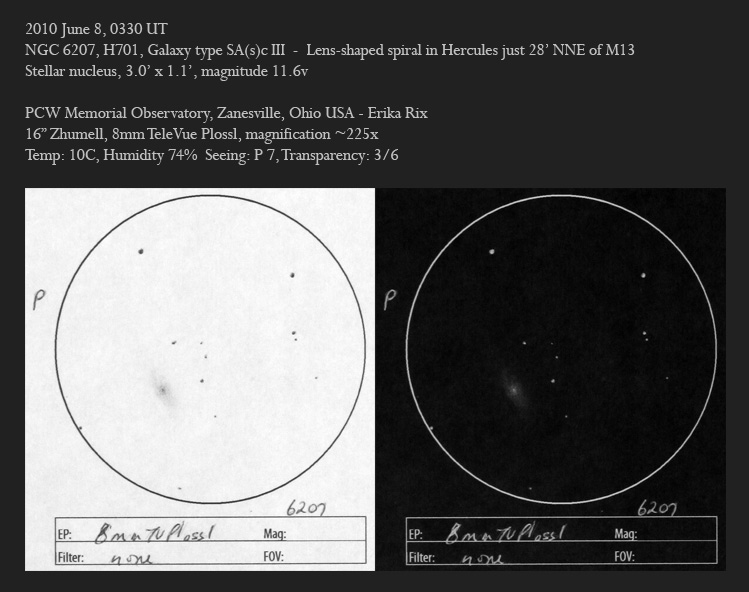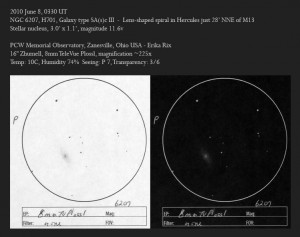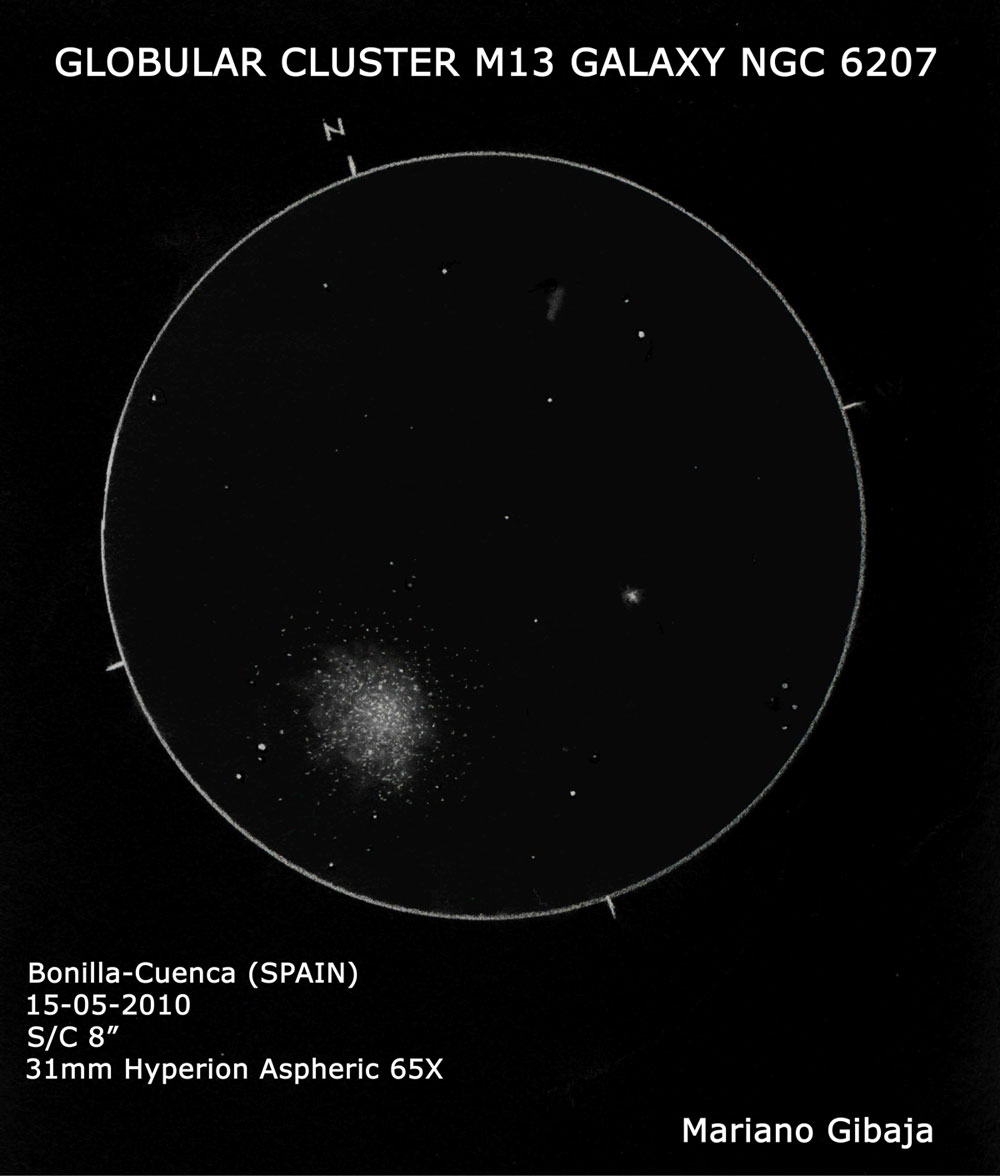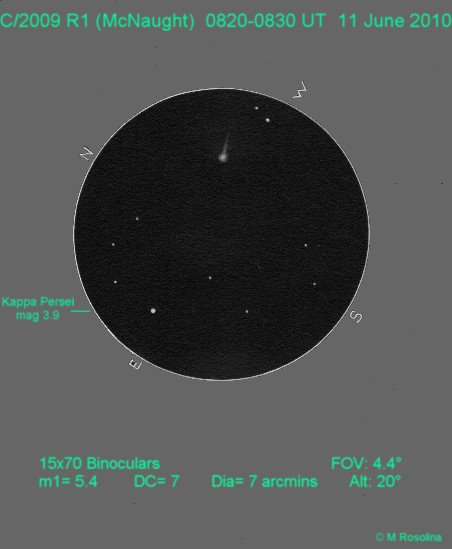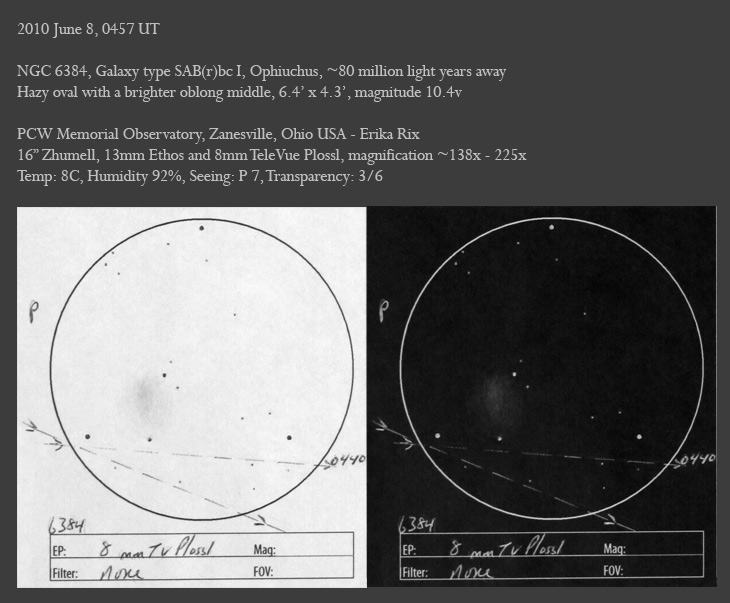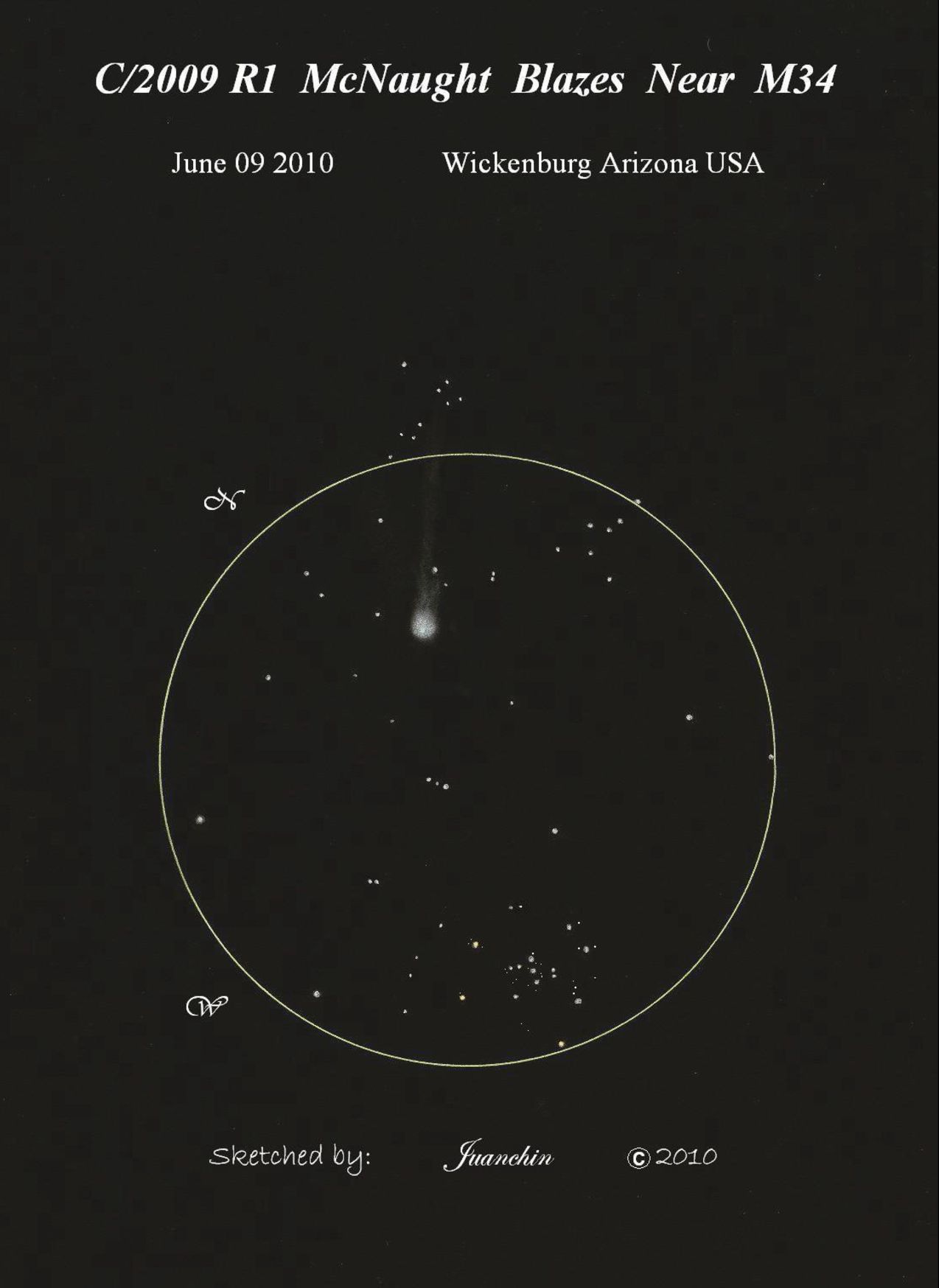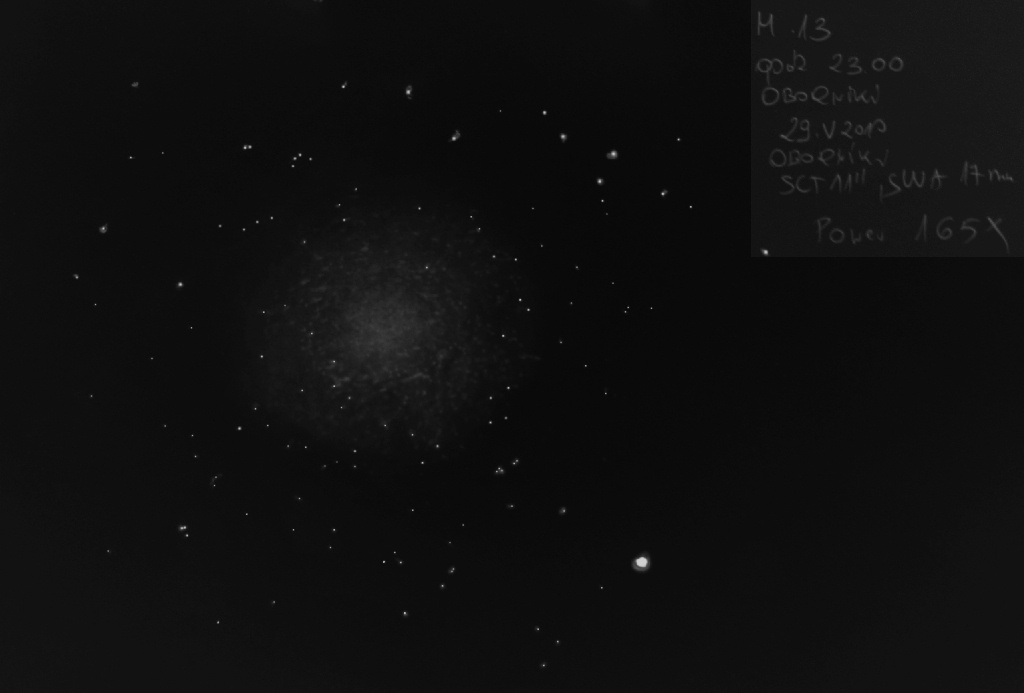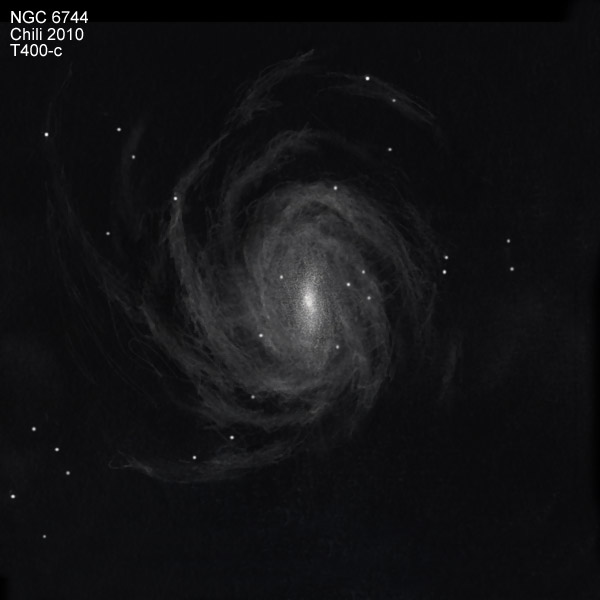2010 June 8, 0330 UT
NGC 6207, H701, Galaxy type SA(s)c III
Lens-shaped spiral in Hercules just 28í NNE of M13
Stellar nucleus, 3.0í x 1.1í, magnitude 11.6v
PCW Memorial Observatory, Zanesville, Ohio USA – Erika Rix
16î Zhumell, 8mm TeleVue Plossl, magnification ~225x
Temp: 10C, Humidity 74%
Seeing: P 7, Transparency: 3/6
Sketch created scopeside with Rite in the Rain paper, black
ballpoint ink pen, #2 pencil then the stars cleaned up in Photoshop
and inverted with adjustment to brightness and contrast.
The light pollution was terrible tonight. There were five houses on
the hillside of the neighboring road with security lights on rather
than just the farm across the fields. And even though the trees
from the top of that hill block Dollar Generalís warehouse, the sky
above it lit up like a bright dome. Seems to be worse this year and
I was forced to put up the southern drop down wall of the
observatory to block out the excess light.
Nevertheless, it was a very enjoyable night under the stars and the
Milky Way was still visible. M13, olí faithful, was the first to be
viewed. I always kind of thought it looked like a stellar version
of a sarcoptic mite with the legs and tiny hairs sticking out at
the sides. I started off with a 13mm Ethos and then dropped down to
an 8mm TV Plossl. The number of individual stars in the globular
cluster that popped out was amazing.
Switching back to the 13mm, pushed the scope across slightly to NGC
6207, and then switched back to the 8mm again for a closer look.
The nucleus was stellar, but I was unable to really pinpoint
exactly where the brightest area was. I had to view with averted
vision and believe I have it placed fairly accurately.
